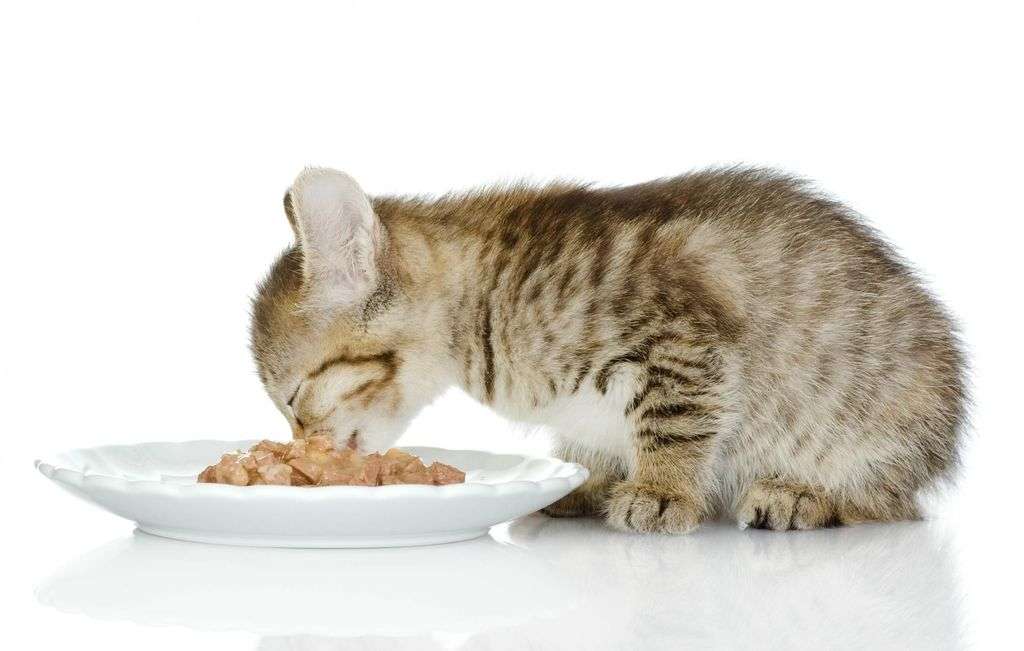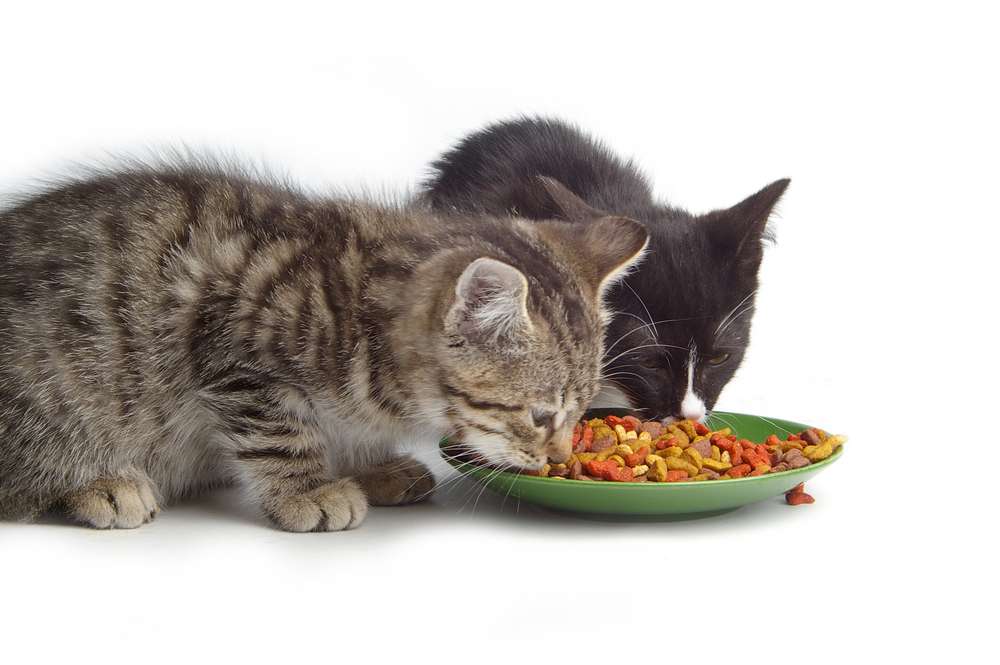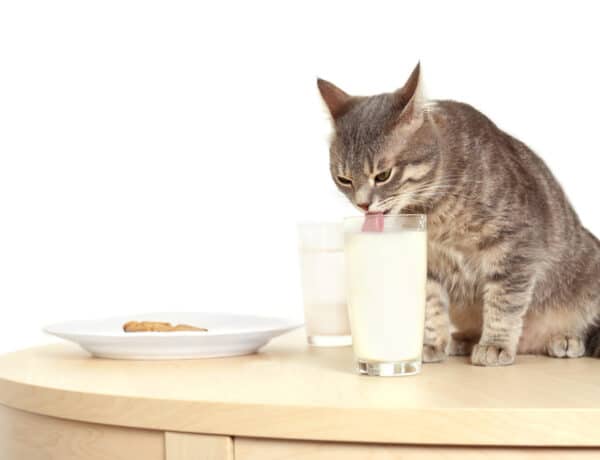Introduction
When it comes to feeding our feline friends, one of the most common debates among cat owners is whether wet or dry food is better for cats. Both options have their own advantages and disadvantages, and it can be challenging to determine which one is the best choice for your furry companion. In this article, we will explore the pros and cons of wet and dry cat food, helping you make an informed decision about what to feed your beloved pet.
The Benefits of Wet Cat Food
Wet cat food, also known as canned cat food, is made up of a high percentage of moisture, typically around 75%. This high moisture content is beneficial for cats as it helps to keep them hydrated, especially if they are not drinking enough water on their own. Additionally, the soft texture of wet cat food makes it easier for cats to chew and digest, particularly for kittens, senior cats, or those with dental issues.
Furthermore, wet cat food tends to have a higher protein content compared to dry food. This is important for cats as they are obligate carnivores, meaning they require a diet rich in animal protein. Wet cat food often contains a variety of meat sources, providing cats with the essential amino acids they need for optimal health. It is also worth noting that some cats simply prefer the taste and texture of wet food, making it a more appealing option for picky eaters.

Why is wet food better than dry food for cats?
When it comes to choosing the right food for our feline friends, there is often a debate between wet food and dry food. While both options have their own advantages, wet food has been gaining popularity among cat owners for several reasons. In this article, we will explore why wet food is considered better than dry food for cats.
Health Benefits:
One of the main reasons why wet food is preferred over dry food is its higher moisture content. Cats are naturally prone to dehydration, and consuming wet food helps them stay hydrated. This is especially important for cats who do not drink enough water on their own. The increased moisture in wet food also aids in maintaining urinary tract health and preventing issues like urinary tract infections.
Furthermore, wet food is often considered more nutritionally balanced compared to dry food. It contains a higher percentage of animal-based proteins, which are essential for a cat’s overall health and wellbeing. These proteins help in maintaining lean muscle mass, promoting healthy skin and coat, and supporting a strong immune system.
Digestive Health:
Cats are obligate carnivores, which means their bodies are designed to digest and absorb nutrients from animal-based proteins. Wet food closely resembles their natural diet, which consists of high-quality proteins from meat. The moisture content in wet food also aids in digestion and prevents issues like constipation, which can be common in cats consuming a dry food diet.
Moreover, wet food is easier for cats to chew and swallow, especially for those with dental issues or missing teeth. The soft texture of wet food reduces the risk of choking and makes it more palatable for cats with sensitive mouths.
What are the pros and cons of wet vs dry cat food?
When it comes to choosing the right type of food for your feline friend, there are two main options to consider: wet and dry cat food. Each option has its own set of pros and cons, and it’s important to weigh them carefully to make an informed decision. In this article, we will explore the advantages and disadvantages of wet and dry cat food to help you choose the best option for your furry companion.
Pros of Wet Cat Food:
One of the main advantages of wet cat food is its high moisture content. Cats are naturally prone to dehydration, and wet food can help ensure they stay properly hydrated. This is especially important for cats who don’t drink enough water on their own. Additionally, the high moisture content in wet cat food can be beneficial for cats with urinary tract issues or kidney problems.
Another advantage of wet cat food is its palatability. The strong aroma and rich flavors of wet food can be more appealing to cats, especially those who are picky eaters or have dental issues. Wet food can also be easier for older cats or those with missing teeth to chew and digest.
Cons of Wet Cat Food:
One of the main drawbacks of wet cat food is its shorter shelf life once opened. Unlike dry cat food, wet food needs to be refrigerated and consumed within a certain timeframe to prevent spoilage. This can be inconvenient for pet owners who prefer to leave food out for their cats throughout the day.
Another disadvantage of wet cat food is its higher cost compared to dry food. Wet food generally comes in smaller portions and is more expensive per serving. This can add up over time, especially for pet owners on a tight budget.
Do cats need wet food everyday?
When it comes to feeding our feline friends, there is often a debate about whether cats need wet food everyday or if dry food is sufficient. While both types of food have their own benefits, wet food can be an important part of a cat’s diet.
Wet food provides cats with much-needed hydration. Cats are notorious for not drinking enough water, which can lead to dehydration and urinary tract problems. Wet food has a high moisture content, which helps to keep cats hydrated and can prevent these health issues. Additionally, the moisture in wet food can also help to prevent constipation in cats.
Wet food can also be beneficial for cats with certain health conditions. For example, cats with dental problems or missing teeth may have difficulty chewing dry food, making wet food a better option for them. Similarly, cats with kidney disease or urinary tract issues may benefit from the increased hydration provided by wet food.
Furthermore, wet food can be more palatable for cats. Cats are known for being picky eaters, and some cats may simply prefer the taste and texture of wet food over dry food. This can be especially important for cats who are recovering from an illness or surgery and may have a decreased appetite.
However, it is important to note that wet food should not be the sole source of nutrition for cats. Dry food can provide important nutrients and help to keep a cat’s teeth clean. It is recommended to offer a combination of wet and dry food to ensure a balanced diet for your cat.
What are the disadvantages of wet cat food?
Wet cat food is a popular choice among cat owners due to its high moisture content and palatability. However, like any other type of cat food, wet cat food also has its disadvantages. These disadvantages can vary depending on the specific brand and ingredients used, but there are some common drawbacks that cat owners should be aware of.
One of the main disadvantages of wet cat food is its cost. Compared to dry cat food, wet cat food is generally more expensive. This can be a significant factor for cat owners on a tight budget or those with multiple cats to feed. Additionally, wet cat food has a shorter shelf life once opened, which means it needs to be consumed within a certain period of time to avoid spoilage. This can lead to wastage if the cat does not finish the entire portion.
Another disadvantage of wet cat food is its potential for dental issues. Wet cat food is soft and does not provide the same level of dental benefits as dry cat food. The chewing action required to eat dry cat food helps to remove plaque and tartar from the teeth, promoting better oral health. Cats that primarily eat wet cat food may be more prone to dental problems such as tooth decay and gum disease.
Furthermore, wet cat food can be messier to feed and store compared to dry cat food. The high moisture content of wet cat food can make it more prone to spills and leaks, which can be a hassle to clean up. Additionally, the leftover wet cat food can quickly become smelly and attract flies or other pests if not properly disposed of. Storing wet cat food also requires more space in the refrigerator or pantry, which can be a challenge for those with limited storage space.
Lastly, some cat owners may find that their cats become pickier eaters when fed wet cat food. The strong smell and taste of wet cat food can make it more difficult to switch to a different type or brand of cat food if needed. This can be problematic if the cat has specific dietary requirements or if the owner wants to introduce variety into their cat’s diet.
Is it bad to feed my cat only wet food?
Feeding your cat a diet consisting solely of wet food can have both advantages and disadvantages. While wet food can provide certain benefits for your cat’s health, it is important to consider the potential drawbacks as well.
On the positive side, wet food can be beneficial for cats in several ways. Firstly, it contains a higher moisture content compared to dry food, which helps to keep your cat hydrated. This is particularly important for cats who may not drink enough water on their own. Additionally, the high water content in wet food can help prevent urinary tract issues, such as the formation of crystals or stones. Wet food also tends to be more palatable for cats, which can be beneficial for picky eaters or cats with dental issues.
However, there are also some potential downsides to feeding your cat only wet food. One of the main concerns is that wet food can be more expensive than dry food, especially if you are feeding a large cat or multiple cats. Additionally, wet food has a shorter shelf life once opened and may need to be refrigerated, which can be inconvenient for some pet owners. Another consideration is that wet food can contribute to dental problems, as it does not provide the same level of dental cleaning that dry food does. This can be mitigated by incorporating dental treats or regular teeth brushing into your cat’s routine.
It is important to strike a balance when it comes to your cat’s diet. While wet food can offer certain benefits, it is generally recommended to provide a combination of wet and dry food to ensure a well-rounded diet. This allows your cat to benefit from the advantages of both types of food while minimizing the potential drawbacks. Consulting with your veterinarian can help you determine the best feeding plan for your individual cat, taking into account their specific needs and health concerns.
What are the advantages of feeding cats wet food?
Feeding cats wet food has several advantages. Firstly, wet food has a higher moisture content compared to dry food, which helps to keep cats hydrated. This is especially important for cats who do not drink enough water on their own. The increased moisture in wet food can also be beneficial for cats with urinary tract issues, as it helps to dilute their urine and prevent the formation of crystals or stones.
Secondly, wet food is generally more palatable for cats due to its texture and smell. This can be particularly beneficial for cats who are picky eaters or have dental issues that make it difficult for them to chew dry food. Additionally, the strong aroma of wet food can stimulate a cat’s appetite, making it a good option for cats who have a decreased appetite or are recovering from an illness.
What are the advantages of feeding cats dry food?
Feeding cats dry food has several advantages. Firstly, dry food is more convenient and easier to store compared to wet food. It can be left out for longer periods without spoiling, making it ideal for busy pet owners or those who prefer to free-feed their cats. Additionally, dry food promotes dental health by helping to reduce plaque and tartar buildup. The crunchy texture of dry kibble helps to scrape away plaque from the teeth, which can prevent dental diseases such as gingivitis and periodontal disease.
Another advantage of feeding cats dry food is that it tends to be more cost-effective than wet food. Dry food is generally less expensive per serving and can be bought in larger quantities, making it a budget-friendly option for cat owners. Furthermore, dry food is often more energy-dense than wet food, meaning that cats can consume smaller portions while still receiving the necessary nutrients. This can be beneficial for cats that need to lose weight or for those with specific dietary requirements.
Are there any specific health benefits associated with feeding cats wet food?
Feeding cats wet food can provide several specific health benefits for our feline friends. One of the main advantages is that wet food helps to keep cats hydrated. Cats have a low thirst drive and may not drink enough water, which can lead to dehydration and urinary tract problems. Wet food has a high moisture content, helping to ensure that cats receive enough fluids to maintain their overall health.
Additionally, wet food can be beneficial for cats with certain health conditions. For example, cats with dental issues or missing teeth may find it easier to eat wet food, as it is softer and requires less chewing. Wet food can also be helpful for cats with digestive problems or sensitive stomachs, as it is easier to digest compared to dry food.
Are there any specific health benefits associated with feeding cats dry food?
Feeding cats dry food can provide several specific health benefits. One of the main advantages is that dry food helps to promote dental health in cats. The crunchy texture of dry kibble helps to remove plaque and tartar buildup on their teeth, reducing the risk of dental diseases such as gingivitis and periodontal disease. Additionally, some dry cat foods are specially formulated to support urinary tract health. These formulas contain ingredients that help to maintain a healthy pH balance in the urine, reducing the risk of urinary tract infections and other urinary issues.
Another health benefit of feeding cats dry food is that it can help with weight management. Dry cat food tends to have fewer calories compared to wet food, making it a suitable option for cats that need to lose or maintain their weight. The higher fiber content in dry food can also help cats feel fuller for longer, reducing the likelihood of overeating. Additionally, dry food is more convenient to store and serve, making it a practical choice for busy cat owners.
What factors should be considered when deciding between wet or dry food for cats?
When deciding between wet or dry food for cats, there are several factors that should be taken into consideration. One important factor is the cat’s age and health condition. Kittens and older cats may benefit more from wet food as it provides them with the necessary hydration and is easier to chew. Wet food also tends to have a higher protein content, which is beneficial for cats with certain health conditions such as kidney disease or urinary tract issues.
Another factor to consider is the cat’s dental health. Dry food can help promote dental health by reducing plaque and tartar buildup. The crunchy texture of dry food helps to scrape off plaque from the teeth, promoting better oral hygiene. However, if a cat already has dental issues or is prone to dental problems, wet food may be a better option as it is softer and easier to chew.

Conclusion
When it comes to feeding our feline friends, one of the most common questions that arises is whether wet or dry food is better for them. Both options have their own advantages and disadvantages, and the decision ultimately depends on various factors such as the cat’s age, health condition, and personal preferences. In this article, we will explore the pros and cons of wet and dry cat food to help you make an informed decision.
Wet cat food, also known as canned cat food, is made up of a high percentage of water content. This makes it an excellent choice for cats who struggle to stay hydrated or have urinary tract issues. The moisture in wet food helps to prevent dehydration and promotes healthy kidney function. Additionally, the soft texture of wet food is easier for cats with dental problems or missing teeth to chew and digest. It also tends to be more palatable, making it a great option for picky eaters.
On the other hand, dry cat food, also known as kibble, is more convenient and cost-effective. It has a longer shelf life and can be left out for free-feeding, allowing cats to eat whenever they please. Dry food is also beneficial for dental health as the crunchy texture helps to reduce plaque and tartar buildup. Furthermore, it is generally more energy-dense than wet food, meaning that cats require smaller portions to meet their nutritional needs. This can be advantageous for weight management and preventing obesity.
Ultimately, the choice between wet and dry cat food depends on your cat’s individual needs and preferences. If your cat has specific health concerns or struggles with hydration, wet food may be the better option. On the other hand, if convenience, dental health, or weight management are your priorities, dry food may be the way to go. It is also worth considering a combination of both wet and dry food to provide a balanced diet. Consulting with your veterinarian can help you determine the best choice for your furry friend.





No Comments